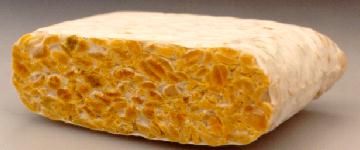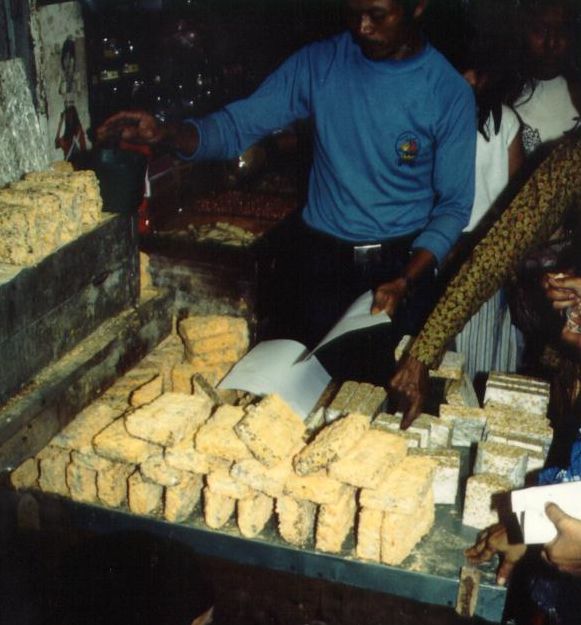|
|||||
|
|||||||
|
    An initiative of :Stichting Food-Info
|
| Food-Info.net> Questions and Answers > Food products > Legumes and beans What is tempeh?Tempeh is a fermented food made from soybeans, most popular in Indonesia and other parts of Southeast Asia . Tempeh is unique among major traditional soyfoods in that it is the only one that did not originate in China or Japan . It originated in today's Indonesia, almost certainly in Central or East Java, almost certainly prior to 1800, and perhaps as long ago as a thousand years or more.
 Tempeh To make tempeh, cooked and dehulled soybean cotyledons (which may be lightly acidified with a traditional lactic acid prefermentation or, nowadays, with lactic acid or vinegar) are well drained then inoculated with spores of the Rhizopus oligosporus mould, packed into perforated containers (polyethylene bags or traditional banana leaves,) and incubated at 30-31°C for about 24 hours, until the beans are bound together tightly by the mycelium. The tempeh is then ready to sell or to cook.
 Tempeh in an Indonesian village market As a result of the fermentation process the soy bean protein becomes much more digestible. In particular, the oligosaccharides that are associated with gas and indigestion are greatly reduced by the Rhizopus culture (see here). In traditional tempeh making shops, the starter culture often contains other fungi or bacteria originating from the natural starter, traditionally Hibiscus leaves (named usar). In western countries, it is more common to use a pure culture containing only Rhizopus oligosporus. Specialty tempehs may be made from other types of beans, or may include a mixture of beans and whole grains.
|
|
| ||
| Food-Info.net is an initiative of Stichting Food-Info, The Netherlands | ||||||